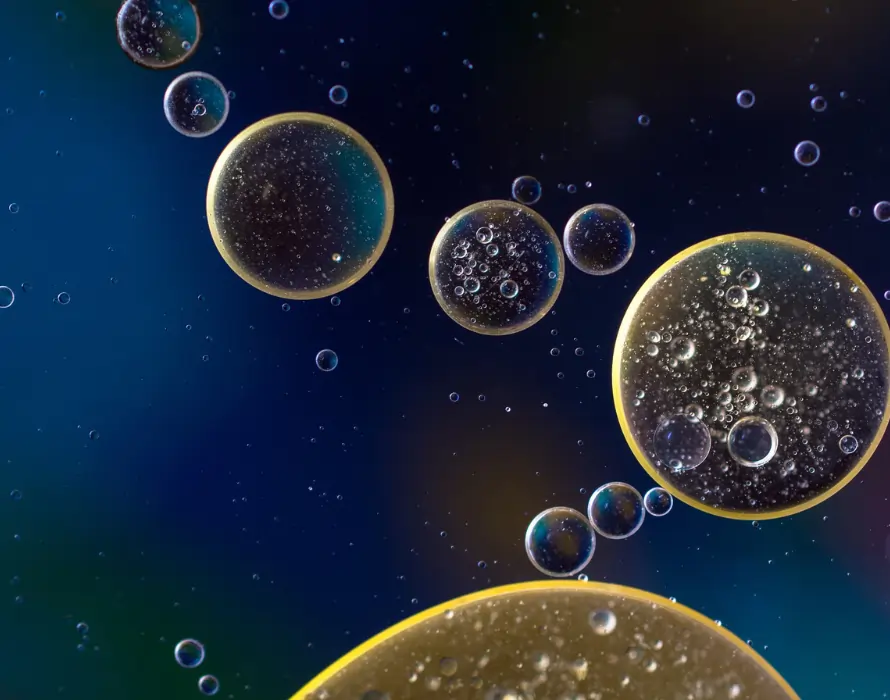Have you ever seen oil float on water or watched how a lava lamp works?
That’s immiscibility in action!
In simple terms, immiscibility is when two liquids don’t mix, like oil and water.
Instead of blending together, they separate into layers.
It’s a fascinating concept that’s easy to spot in everyday life, like when you see salad dressing with floating oil or rainbow patterns in puddles with oil on them.
Age-by-Age Guide to Explaining Immiscibility
Ages 3-5: Introducing Immiscibility Through Play
At this age, simplicity is key. Tell kids that some liquids, like oil and water, are “friends who like to stay apart.” Use visual and tactile activities like the ones mentioned below to keep them engaged.
Activities:
- Shaking Bottles: Fill a clear bottle with water, oil, and food coloring. Let them shake it and watch as the liquids separate again.
- Color Mixing: Drop oil onto colored water and see how the two stay apart.
Ages 6-8: Fun Experiments for Early Learners
Kids aged 6-8 are ready to dig a bit deeper. Explain that oil and water don’t mix because of their different properties. Use words like “water-loving” (hydrophilic) and “oil-loving” (hydrophobic) to explain why.
Experiments:
- Floating Beads: Drop beads in oil and water to show how density affects immiscibility.
- Simple Salad Dressing: Mix oil, vinegar, and spices, then let them separate.
- Using Art and Creativity: Let kids paint with oil and water-based colors to see how they repel each other. Encourage them to experiment with marbling techniques.
Ages 9-12: Exploring Immiscibility with Science
Older kids can handle more detailed scientific explanations. Teach them about molecules, polarity, and density.
Activities:
- Density Tower: Create layers of immiscible liquids like honey, water, and oil.
- Experiment with Soap: Show how soap can make oil and water mix temporarily by acting as a bridge (emulsifier).
- DIY Lava Lamp: Make a DIY lava lamp with your child for a fun-filled afternoon of learning and creativity. Follow the detailed step-by-step guide in this article to get started!
Ages 13 and Up: Advanced Exploration of Immiscibility
Teens can learn about immiscibility in terms of chemistry, such as polar versus nonpolar molecules.
Challenge them with experiments that require forming hypotheses and analyzing results.
Experiments:
- Oil Spill Cleanup: Simulate an oil spill and explore how different materials (e.g., paper towels, sponges) clean it up.
- Temperature Effects: Test how heat affects the separation of oil and water.
Conclusion
Immiscibility is a fascinating concept that’s easy and fun to teach with the right tools and activities. By breaking it down age-by-age and incorporating hands-on experiments, kids of all ages can understand and appreciate this science.



One response to “Immiscibility Made Easy: Experiments & Learning by Age for Kids”
[…] Discover age-appropriate activities to teach and explore immiscibility in this article. […]